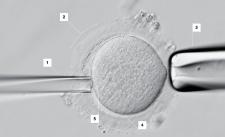Student debt is driving more Americans to donate their eggs — and some suffer lasting complications
By Diane Tober,
Salon
| 02. 15. 2021
*Names have been changed to protect privacy.
Janine* was raised by a single mother in the San Francisco Bay Area. With resources tight, both she and her sister needed to find a way to put themselves through college. Her sister started donating her eggs for pay once she turned 20, working two jobs and struggling to stay in school. When Janine turned 19, she started donating eggs as well. "I was a desperate college student, living paycheck to paycheck," she told me "So, when my sister told me I could make $7,000 donating eggs, I jumped at the chance. You have to get an education. If it weren't for that desperation, most women wouldn't do it."
The cost of college tuition in the US across all sectors has more than tripled in the past twenty years—well beyond the cost of inflation—making education out of reach for many. The rapidly rising cost of education has led to a rise in student loan debt as parents and students borrow to help ensure their dream of future success.
I've learned through my interviews and surveys with more than 600...
Related Articles
By Grace Won, KQED [with CGS' Katie Hasson] | 12.02.2025
In the U.S., it’s illegal to edit genes in human embryos with the intention of creating a genetically engineered baby. But according to the Wall Street Journal, Bay Area startups are focused on just that. It wouldn’t be the first...
Several recent Biopolitical Times posts (1, 2, 3, 4) have called attention to the alarmingly rapid commercialization of “designer baby” technologies: polygenic embryo screening (especially its use to purportedly screen for traits like intelligence), in vitro gametogenesis (lab-made eggs and sperm), and heritable genome editing (also termed embryo editing or reproductive gene editing). Those three, together with artificial wombs, have been dubbed the “Gattaca stack” by Brian Armstrong, CEO of the cryptocurrency company...
By Lucy Tu, The Guardian | 11.05.2025
Beth Schafer lay in a hospital bed, bracing for the birth of her son. The first contractions rippled through her body before she felt remotely ready. She knew, with a mother’s pit-of-the-stomach intuition, that her baby was not ready either...
By Emily Glazer, Katherine Long, Amy Dockser Marcus, The Wall Street Journal | 11.08.2025
For months, a small company in San Francisco has been pursuing a secretive project: the birth of a genetically engineered baby.
Backed by OpenAI chief executive Sam Altman and his husband, along with Coinbase co-founder and CEO Brian Armstrong, the startup—called...




